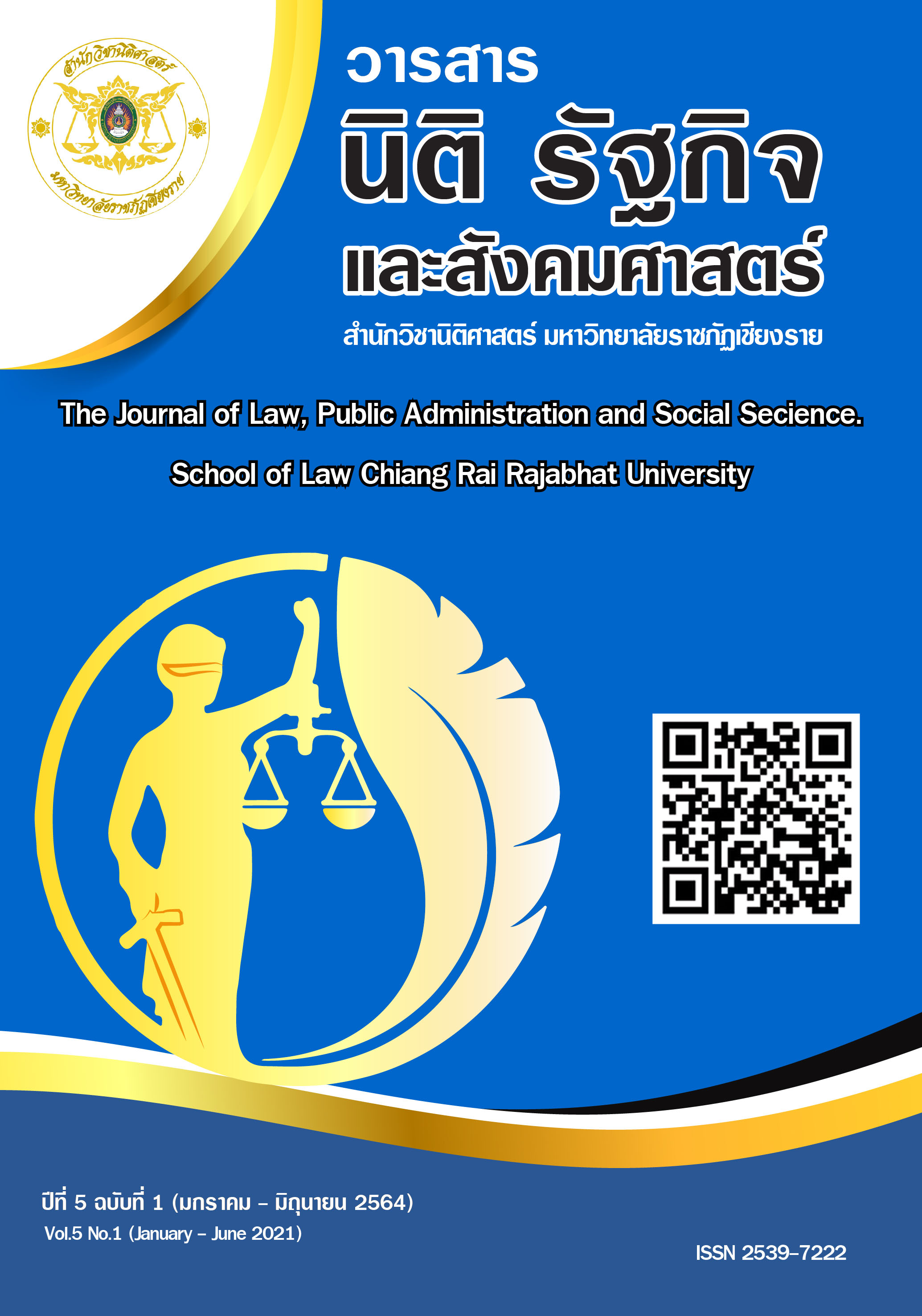The Development of Talent Management Strategy for Private Sector Organization in Thailand: an Application of Research Synthesis and User Experience Research.
Main Article Content
Abstract
This research Have a purpose To analyze talent management strategies, the secondary objectives are to synthesize research on talent management. With to study talent management strategies from user experience in private organizations For creating talent management strategies and to assess talent management strategies for private sector organizations in Thailand. Define populations and informants, including dissertation and dissertation. About talent management for private organizations in Thailand Published during the year 2010 - 2018, 17 subjects: Non-governmental organization executives in Thailand and / or consultants with expertise in human resources, totaling 9 people and academics with knowledge of talent management, including 5 people with research tools. Consists of research papers Semi-structured interview Group chat Data analysis The research was synthesized individually with content analysis techniques, percentage, mean and standard deviation.
The results of the study were as follows: 1) Talent management strategy analysis from the synthesis of research on talent management, gained knowledge of 4 subjects and the study of talent management strategies from user experience in Private organization in Thailand Be able to explain five processes of talent management. 2) Developing talent management strategies for private organizations in Thailand. By integrating the conceptual framework of system theory 3) Talent management strategy for private organizations in Thailand. Overall at the highest level Which is considered to have a high level of value This strategy can be applied.
Article Details
References
กระทรวงสาธารณสุข. “พิมพ์เขียวและแผนปฏิบัติการขับเคลื่อน Thailand 4.0 โมเดลขับเคลื่อนประเทศไทยสู่ความมั่นคง มั่งคั่ง และยั่งยืน.” (2559). http://bps.moph.go.th/new_bps/sites/default/.../Thailand%204.0_050160%20%281%29.pdf, สืบค้นเมื่อ 17 กุมภาพันธ์ 2561.
กองบริหารข้อมูลตลาดแรงงาน. วารสารสถานการณ์ตลาดแรงงาน, (2560), https://www.doe.go.th/prd/assets/upload/files/lmia_th/ 0610547f169a34571387a2db9 9529a7f.pdf, สืบค้นเมื่อ 17 กุมภาพันธ์ 2561.
ฉันทนา เจริญศักดิ์. “รูปแบบการพัฒนาสมรรถนะของผู้พิพากษาในศาลแรงงาน.” ดุษฎีนิพนธ์ปริญญาปรัชญาดุษฎีบัณฑิต สาขาวิชาการพัฒนาทรัพยากรมนุษย์, มหาวิทยาลัยรามคำแหง, 2557.
สำนักงานสถิติแห่งชาติ, สรุปผลการสำรวจภาวะการทำงานของประชากร เดือนธันวาคม 2561, (2561), http://www.nso.go.th, สืบค้นเมื่อ 12 มกราคม 2562.
สุกัญญา รัศมีธรรมโชติ. พัฒนาดาวเด่นเพื่อองค์กรเป็นเลิศด้วย Talent Management by Competency-Based Career Development and Succession Planning. กรุงเทพฯ: สถาบันเพิ่มผลผลิตแห่งชาติ. 2554.
Berger, A. L., and Berger, R. D. The Talent Management Handbook Creating Organizational Excellence by Identifying, Developing, and Promoting Your Best People. New York: McGraw-Hill, 2004.
Bhatnagar, J. “Talent Management Strategy of Employee Engagement in Indian ITES Employees: Key to Retention.” Employee Relations, 29(6), 2007.
Boudreau, J.W. and Ramstad, P. Beyond HR: The New Science of Human Capital. Boston : Harvard Business School Press, 2007.
Boudreau, J. W., Jesuthasan, R., and Creelman, D. Lead the Work: Navigating a World Beyond Employment. New York: John Wiley & Sons, 2015.
Gallup. “Talent Walks: Why Your Best Employees Are Leaving.”, 2018, www.gallup.com. accessed March 8, 2020.
Gubman, L. E. The Talent Solution: Aligning Strategy and People to Achieve Extraordinary Results. United States: The McGraw-Hill Companies, 1998.
Hassenzahl, M., and Tractinsky, N. “User Experience-a Research Agenda.” Behaviour & Information Technology, 25(2), 2006.
Kujala, S., Roto, V., Väänänen-Vainio-Mattila, K., Karapanos, E. and Sinnelä, A. “UX Curve: A Method for Evaluating Long-Term User Experience.” Interacting with Computers, 23(5), 2011.
McDonnell, A. “Still fighting the war for talent’ Bridging the science versus practice gap.” Journal of Business &Psychology, 26(2), 2011.
Michaels, E., Axelrod, B. and Handfield-Jones, H. “Talent Management: A Critical Part of Every Leader’s Job.” Ivey Business Journal, 2001, https://iveybusinessjournal.com/ publication/ talent-management-a-critical-part-of-every-leaders-job/, accessed March 6, 2019.
Michaels, E., Handfild-Jones, H. and Axelrod, B. The War for Talent. United States: McKinsey & Company, Inc., 2001.
Price water house Coopers. The 11th Annual Global CEO survey. New York: Price water house Coopers., 2008.
Robert, E.L., and Robert, J.H. “Talent Management: A critical review.” Human Resource Management Review, (16), 2006.
Schuler et al. “Global talent management: literature review, integrative framework, & suggestions for further research”. Journal of World Business., 45(2), 2011.
Scullion, H., Collings, D.G. and Caligiuri, P. “Global talent management.” Journal of World Business., 45(2), 2010.
Stern, C. CUBI User Experience Model., 2014, http://www.cubiux.com/, accessed April 6, 2019.
Towers Perrin. Talent management: The state of the art., 2005, http://www.connectthedotsconsulting.com/pdfs/Talent%20Management%20-20State%20of% 20the%20Art% 202006.pdf, accessed January 12, 2019.
Trone, K., and Pellant, A. The Essential Guide to Managing Talent. London: Kogan Page., 2007.


